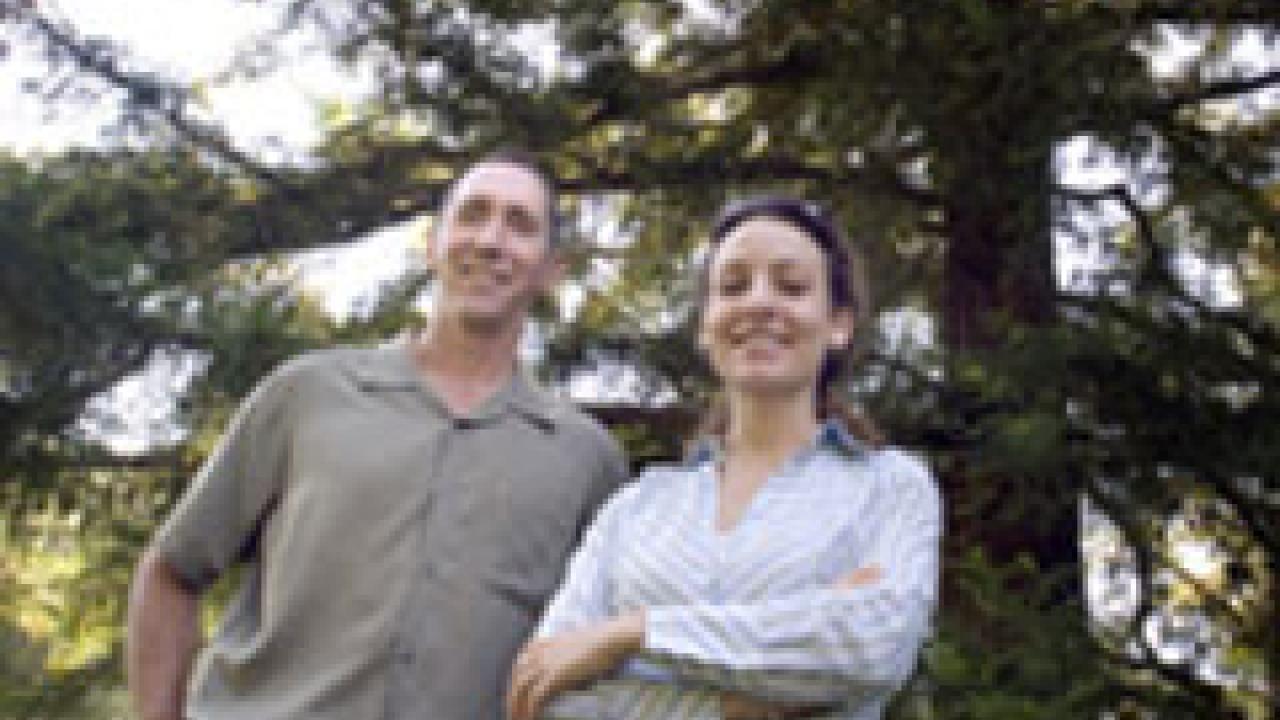Imagine UC Davis' main campus without irrigation, without trees, as just a dusty place on the Central Valley's floor, and you may wonder if the university would even exist at all in such conditions.
"The landscape really makes it livable here," said Skip Mezger, the campus's senior landscape architect. The landscape is both beautiful and practical, he said during a recent outdoor interview under the brilliant summer sun, pointing out with pride how campus trees provide complete shade for many walkways and seating areas.
Mezger said UC Davis' landscape is well worth documenting for a number of reasons: to note historic trees and areas that should be preserved, to prepare a strategy to maintain the landscape's health, and to show respect for the landscape's role in campus development past, present and future.
Put all this together, and you have what is called a landscape heritage plan. UC Davis will soon have one, thanks to a $175,000 Campus Heritage Grant from the Getty Foundation, part of the J. Paul Getty Trust, an international cultural and philanthropic institution devoted to the visual arts.
A foundation news release states that Campus Heritage Grants are intended to help colleges and universities "understand the significance of the historic resources on their campuses and plan for their long-term preservation."
Christina DeMartini Reyes, assistant landscape architect, said the university will contract with a consultant to prepare the landscape heritage plan, and the work could start by fall. The plan probably will be 1½ to two years in the making.
Reyes, who worked with Mezger on the grant proposal, said the landscape heritage plan will pay particular attention to the Quad — which she and Mezger called "the heart and soul of the campus."
They noted a survey a few years back in which UC Davis alumni said their fondest memories of campus did not revolve around buildings, but the landscape — "all the big trees and the Quad."
The campus is "an oasis in the desert," Mezger said. The Quad, he added, is a place of respite. "Students remember throwing Frisbees there, or sitting in the shade."
But, with thousands of students "walking over your landscape every day, it has to be managed, and a lot of care has to go into it."
Standing near the center of the Quad, Mezger said many trees on and near the campus's historic centerpiece are showing signs of declining health.
Trees in the area include cork oaks on the perimeter of the 5.5-acre Quad and on nearby streets. The cork oaks were planted in 1925, and some have been lost.
Normally, a cork oak lives 200 to 300 years, Mezger said. But the Quad in particular is anything but "normal" for trees. Heavy foot traffic compacts the soil, and the well water used for irrigation is laden with salt.
Historical significance
So, one of the questions to be addressed by the landscape heritage plan, Mezger said, is "how do we keep the Quad healthy?"
Other landscaping around campus also has historical significance, Mezger and Reyes said. For example, Lawrence Halprin, who designed the Franklin Delano Roosevelt Memorial in Washington, D.C., served as the landscape architect for a dozen or so UC Davis projects, including Mrak Mall, the tree-lined path between Mrak Hall and Hutchison Drive.
Reyes listed another historic element, the agricultural landscape, which she said is "significant because of the UC Davis research that has shaped the ag industry, and because the sheer abundance of ag land still remaining as a part of the campus has preserved a rural sense of place that has disappeared from many other campuses and towns across the country."
She described "significant historic characteristics throughout the agricultural lands of the campus that are worth exploring further." These characteristics include the use of olive trees as windbreaks; the location and layout of fields, and the barriers separating them; and the relationship of the agricultural landscape to the rest of campus as it has developed over time.
Many of the university's agricultural plots are off to the west of the central campus now, though the dairy remains. The Silo and other barns also remain, moved to new sites and converted to new uses.
For 2006, the Getty Foundation's Campus Heritage Grant Program made 13 awards totaling more than $2 million. The only other recipient in California was Mills College of Oakland.
The foundation's Campus Heritage Grant program began in 2001, and has funded preservation planning at 71 U.S. colleges and universities, including three UC campuses: Berkeley and Santa Cruz, and now Davis.
Media Resources
Dave Jones, Dateline, 530-752-6556, dljones@ucdavis.edu
